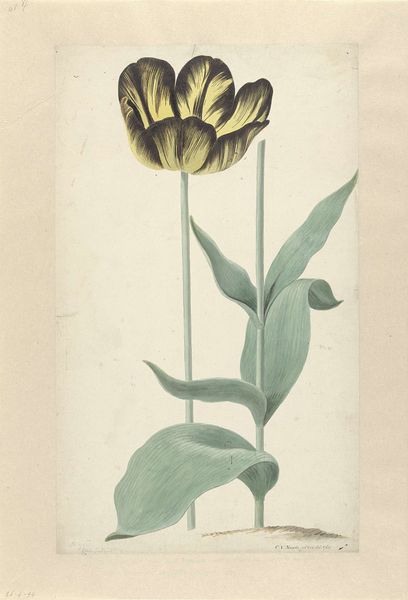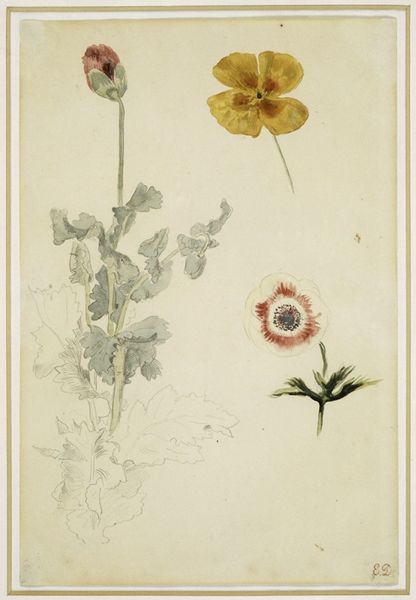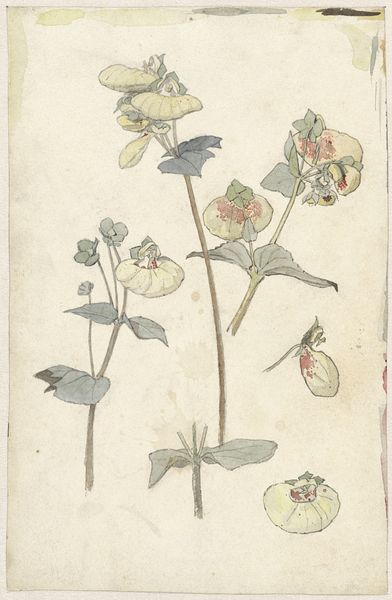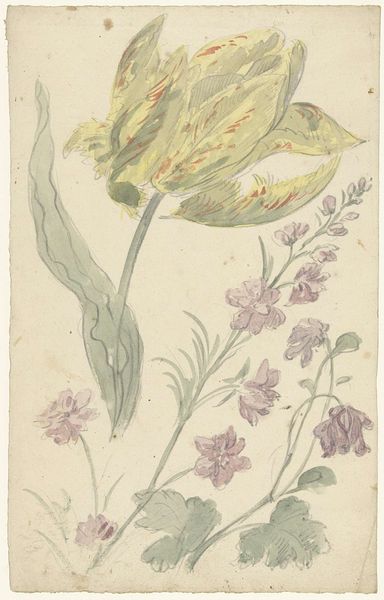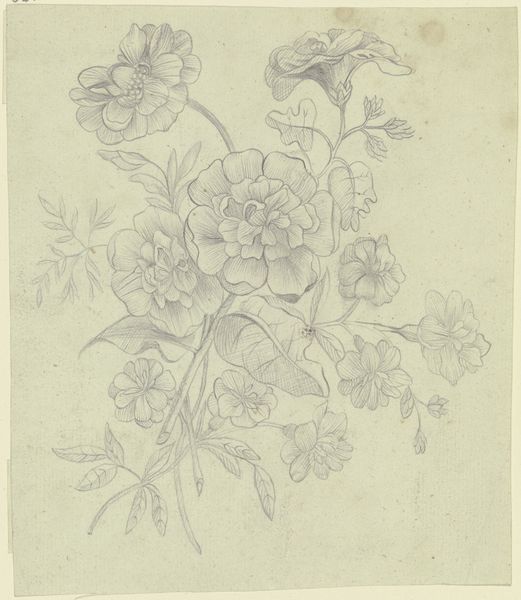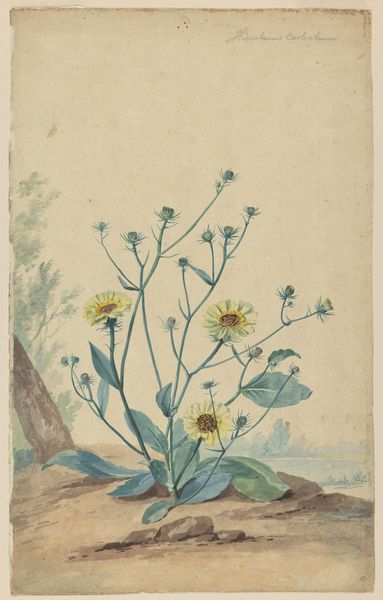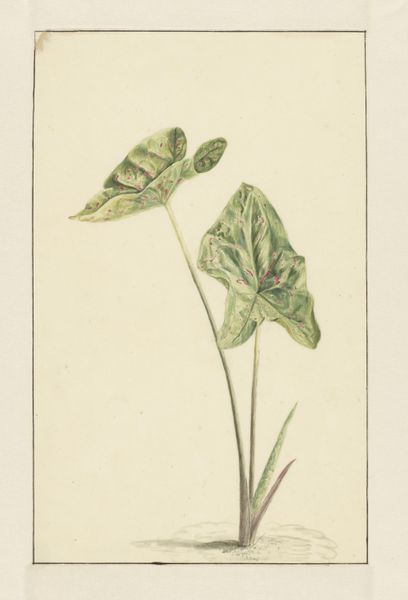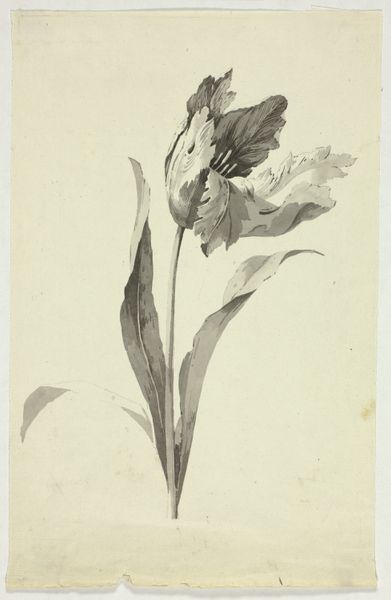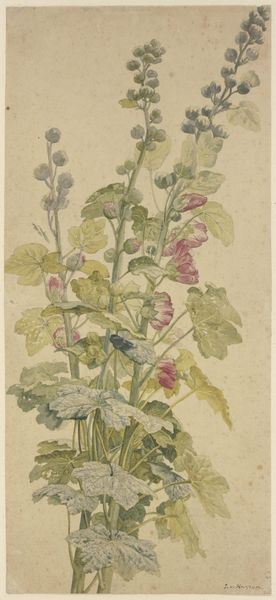
drawing, painting, paper, watercolor
#
drawing
#
dutch-golden-age
#
painting
#
paper
#
watercolor
#
naturalism
Dimensions: height 367 mm, width 218 mm
Copyright: Rijks Museum: Open Domain
Curator: Allow me to introduce “Witte aronskelk,” or “White Arum Lily,” created between 1665 and 1669 by Elias van den Broeck. Executed in watercolor on paper, this botanical drawing exemplifies the Dutch Golden Age’s fascination with the natural world. Editor: It feels so serene, almost like a whisper. The limited palette really emphasizes the elegant shape of the lily. It’s a study in graceful curves, wouldn't you say? Curator: Indeed. Van den Broeck’s mastery lies in his precise rendering of form and texture. Note the delicate veining on the leaves, achieved through subtle gradations of color. This meticulous approach aligns with the naturalist style prevalent at the time, striving for accurate representation. Editor: And the light! See how it gently caresses the edges of the petals, giving them a soft glow? I almost feel like I could reach out and touch them, they look like fragile spun-silk, even though the texture is of the paper! There is such incredible detail throughout. Curator: The artist’s use of negative space is also significant. The light background serves to isolate the flower, drawing attention to its structural intricacies and highlighting its purity of form. This technique allows the viewer to fully appreciate the botanical subject. Editor: I appreciate how simple and meditative this drawing is! It seems the lily isn't just a flower; it is symbolic for transformation or resurrection. It adds an emotional layer to what could otherwise be just a botanical illustration. Curator: Precisely. While rooted in empirical observation, Van den Broeck’s work transcends mere representation, inviting reflection on themes of beauty, fragility, and the ephemeral nature of life itself. The symmetry adds an intellectual quality to it, though I cannot name precisely how! Editor: Thinking of life's fleeting moments and art's attempts to grasp what we'll inevitably lose, I can't imagine a more tender rendering of existence, in all its brief and blooming wonder.
Comments
No comments
Be the first to comment and join the conversation on the ultimate creative platform.
